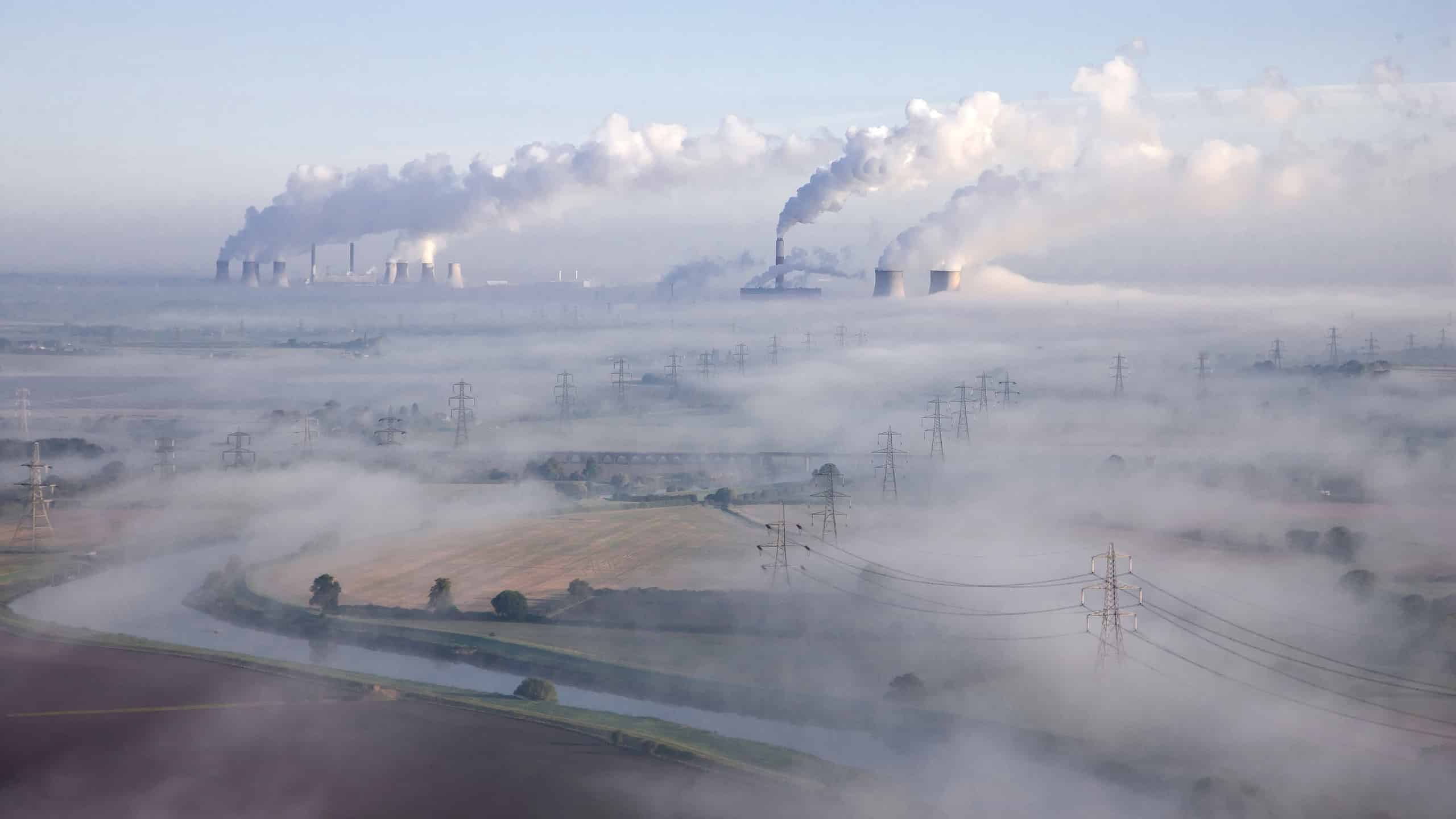Air quality and pollution remain hot-button issues in environmental and news circles alike. From massive natural disasters (like the bushfires in Australia between 2019 and 2020 and the wildfires across Canadian provinces in 2023) to the COVID-19 pandemic, as well as increasing global industrialization, people around the world breathe in less-than-favorable air. In fact, according to the World Health Organization, “Almost all of the global population breathe air that exceeds WHO guideline limits.”
Ambient air pollution, or pollution that is outdoors, poses significant health risks, especially for at-risk populations. Because human-made sources often cause air pollution, measured by the solid and liquid particulate matter found in the air (PM), the burden lies with the human race to identify the hotspots for air pollution and create solutions that afford better air for everyone.
According to IQAir, the following countries have the most air pollution in the world. Learn more about the countries’ air pollution issue, as well as the initiatives each one has instituted to combat air pollution.
#6. India
India has remained among the top countries with the worst air pollution for several years, peaking at number five in 2019. With over 1.4 billion residents of the country, it’s not surprising the pollution comes from man-made sources. Such sources include exhaust, industry, crop burning, and domestic cooking.
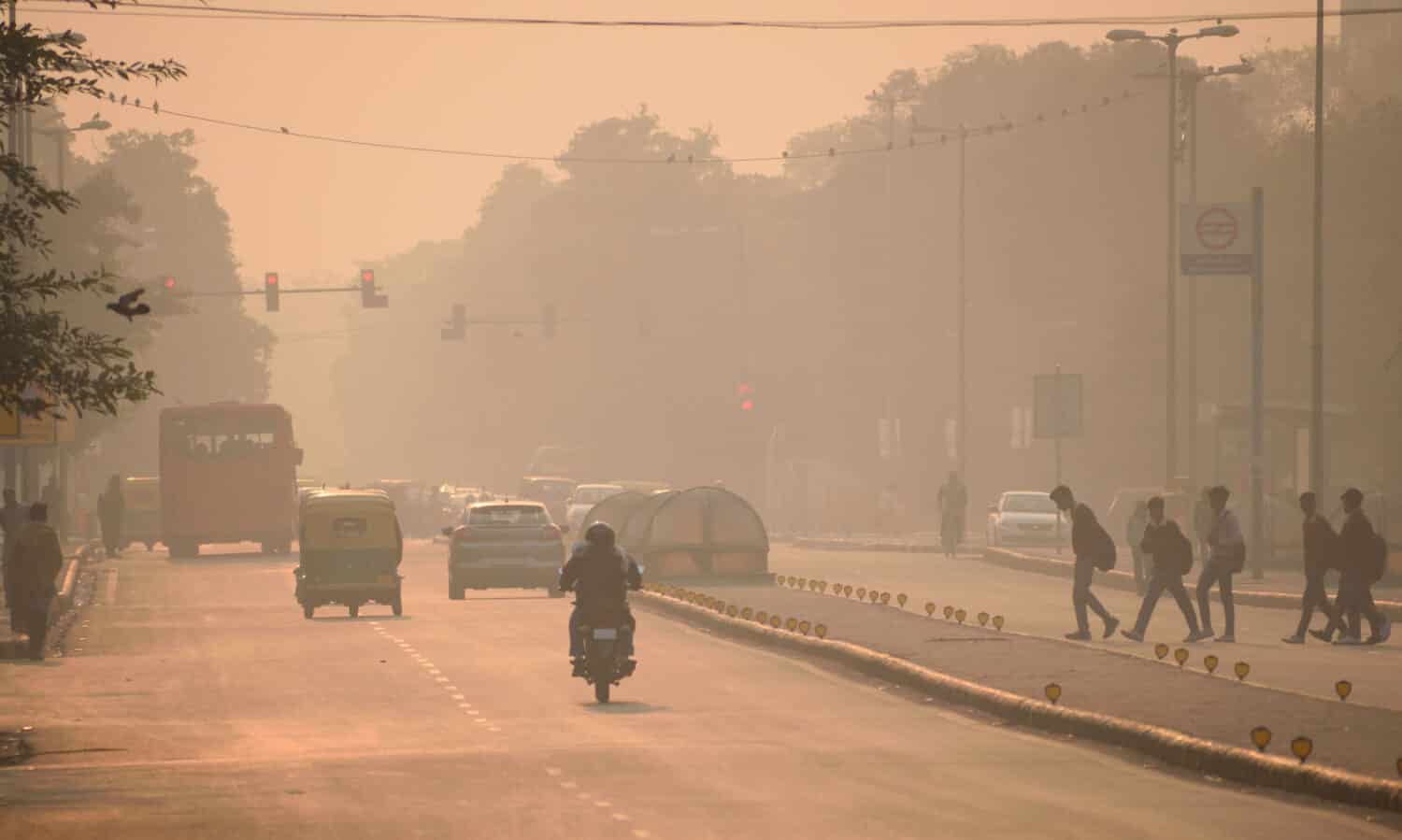
India’s pollution problem comes from many man-made sources, including the exhaust from motorbikes and vehicles.
©Saurav022/Shutterstock.com
Polluted air in India poses a significant threat to its billions of residents. Because of that, Indians should keep abreast of the health and environmental consequences. India lost a whopping 1.6 million lives in 2019 to poor air quality. Official causes of death included strokes, heart attacks, and lung cancer. It also has a significant, negative impact on the economy in the form of lost labor income. A $95 billion impact of dirty air to the Indian economy, to be exact.
Recently, the government of India has been spurred to action to make a change. Public, private, and nonprofit sector businesses work with each other and agencies like the Clean Air Fund to meet the ambitious goal of reducing particulate matter pollution by 30% by 2024.
#5. Kuwait
In 2022, Kuwait’s average PM came in at 11.2 times over WHO’s air quality guidelines. Kuwait’s currency, the dinar, is one of the strongest in the world because it’s backed by large oil reserves.
With Kuwait’s main industrial activity being the extraction and exportation of oil, most pollution in the country comes from those activities — and the occasional disaster when an issue arises with oil. Kuwait also sits close to Saudi Arabia and Iraq, two other countries with significantly poor air quality.
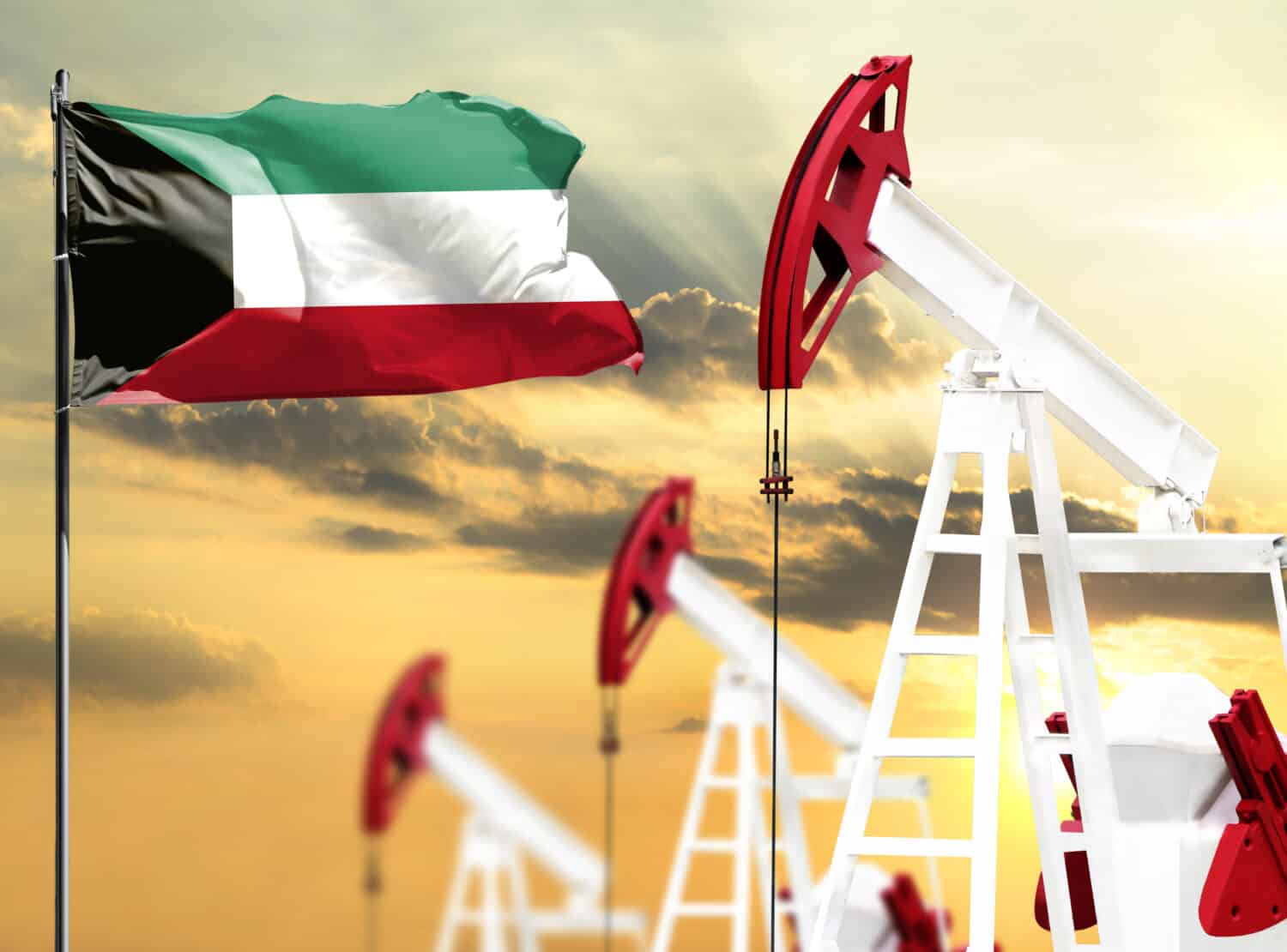
Fossil fuel burning and oil fracking in Kuwait heavily influences the poor air quality.
©Millenius/Shutterstock.com
Kuwait’s fossil fuel burning, oil fracking, and more contribute to the poor air quality, especially in peak production months. Air becomes dangerously unhealthy for the country’s entire population — not just those with preexisting conditions. Kuwaitis face health issues including:
- Rapid aging or scarring of the lungs.
- Lessened lung capacity.
- A larger susceptibility to respiratory issues (e.g. emphysema, bronchitis, pneumonia).
Unfortunately, because Kuwait is so reliant on and abundant with oil reserves, the pollution continues without many solutions introduced by the government.
#4. Bangladesh
The country of Bangladesh, though it’s enjoyed a boom in its economy recently, has an air pollution crisis.
While rural areas’ air quality remains better than their city counterparts, the rapid urbanization of the country coupled with its man-made sources of pollution made it the country with the worst air pollution in 2019. Four years later, it’s sunk to the number five spot. Despite that, many of its bigger cities remain in the top 100 worst cities for air pollution in the world.
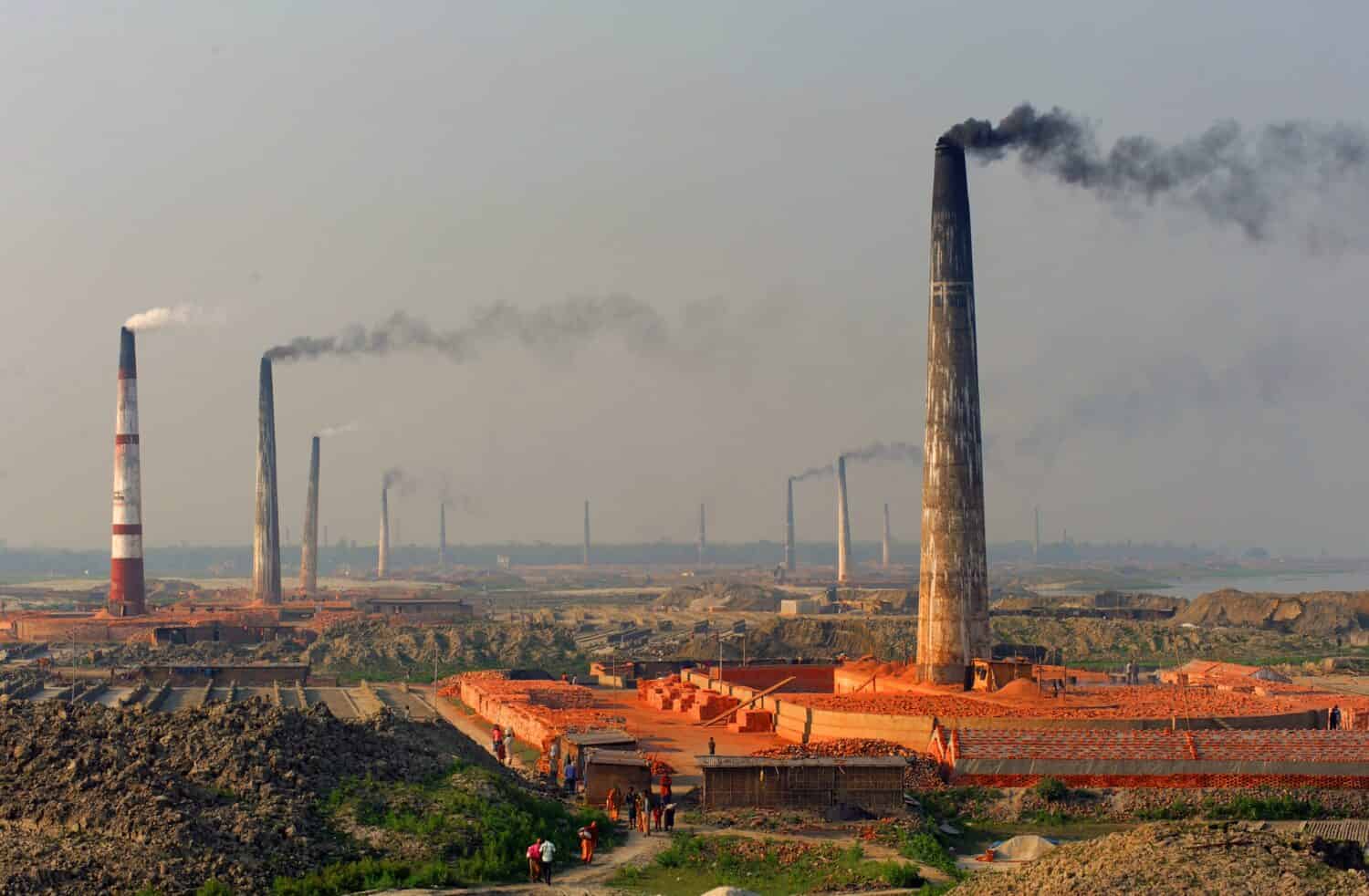
Rapid urbanization in Bangladesh, including the burning of refuse, contribute to Bangladeshi ambient pollution.
©Dmitry Vozdvizhenskiy/Shutterstock.com
Overall, Bangladesh’s air pollution problems stem from the old cars, motorbikes, buses, and trucks that use diesel fuel, as well as the many small and large factories that burn off black soot, sulfur, and other toxic waste that contributes to the worsening ambient pollution.
#3. Pakistan
Pakistan has hollowed itself out a comfortable place on the list of countries with the worst air quality. Its 2.5PM is over 14 times WHO’s guidelines and roughly 3% of the size of an average human hair.

The low-quality fuel used by cars, motorbikes, and buses in Pakistan allows PM to infiltrate the air.
©Simon Says/Shutterstock.com
Seasonal burning of fuels and cycles of more vehicle emissions trap Pakistan in a dangerous loop of poor air quality. During winter, the fossil fuel burnoff from factories compounds on the cold air trapped on the ground, unable to escape. Like Bangladesh, the Pakistan population uses old vehicles running on low-quality fuel, which also spits a heavy amount of pollution into the air. Lastly, Pakistan’s air is home to volatile organic compounds (VOCs). Those become easier to respire when they make it into the air, and they can negatively affect people’s health.
Overall, the country has had minimal success in reducing its air pollution. It has dropped from the number two to the number three position on the world’s worst air pollution country list. The country’s air in many places, though, is nearly lethal still to those with COPD, asthma, and other respiratory issues.
#2. Iraq
Iraq’s deteriorating air quality stems from multiple sources. Those include vehicle emissions, pollution caused by war, the reliance on generators due to inadequate electrical infrastructure, and the fires emanating from oil and gas refineries.
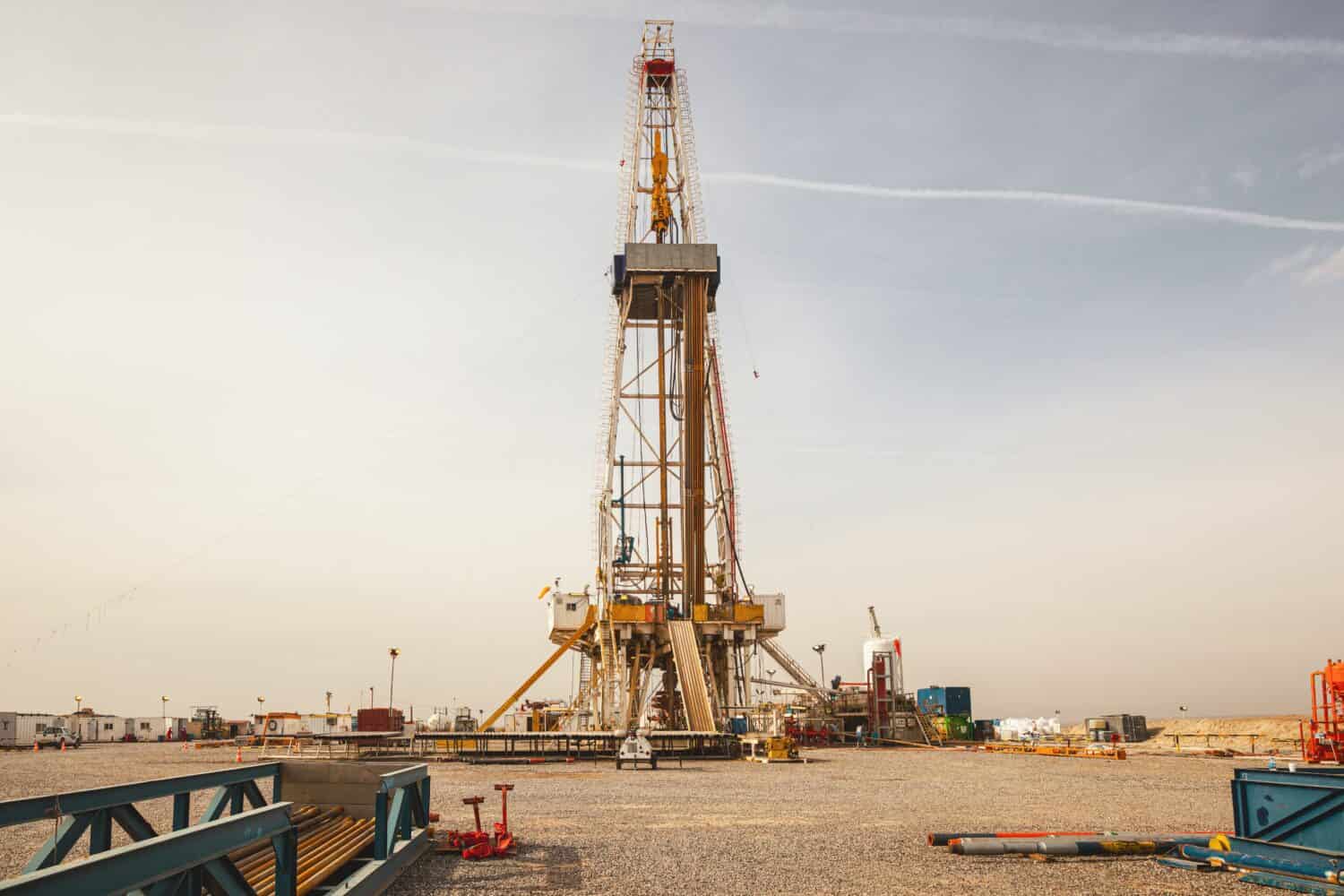
Oil and gas refineries play a large role in Iraq’s air pollution.
©Bertrand Godfroid/Shutterstock.com
Despite Iraq’s endorsement of the Paris Climate Accord and the existence of pollution regulations, the implementation and enforcement of these measures by authorities have been largely ineffective in significantly reducing widespread pollution. These pollutants pose significant harm to the Iraqi population, specifically in terms of long-term or chronic illnesses and morbidity as it relates to respiratory, pulmonary, and cardiovascular health. Consequently, the escalating rates of cancer and other uncommon illnesses have prompted numerous Iraqis to assume personal responsibility for environmental cleanup endeavors.
#1. Chad
Coming in at the worst in the world for air pollution is Chad, where air and waste pollution present severe environmental issues. Unregulated waste burning releases harmful emissions, while transportation challenges contribute to high levels of PM, nitrogen oxide, and carbon monoxide. Chad relies heavily on wood and charcoal for energy, with limited electricity access. Indoor air pollution causes an estimated 9,600 premature deaths annually. Dust storms originating in Chad impact ecosystems and carry pathogens and contaminants, with half of the Sahara-to-Amazon dust flow originating from the Bodele Depression. These problems necessitate urgent measures to mitigate pollution, improve waste management, promote cleaner transportation, and expand access to cleaner energy sources.

Homes that burn coal for heat in Chad throw off significant indoor and ambient pollution.
©Krzysztof Winnik/Shutterstock.com
Understanding Air Pollution
Air pollution remains a global health crisis caused by chemical, physical, and/or biological agents that alter the natural atmosphere. There are two types of air pollution: ambient (outdoor) pollution and indoor pollution. Pollution directly affects air quality and public health, making it a significant issue in geopolitical circles.

Air pollutants enter the atmosphere and humans’ bodies through particulate matter thrown off by factories.
©BLACKDAY/Shutterstock.com
What’s the solution to air pollution? As India has started to do, a country’s best course of action in reducing its air pollution is multi-agency collaboration between the public and private sectors, and between nations. Advanced technology, better equipment, and innovative fuels will contribute to the overall reduction of PM in the air, the creation of smog and haze, and more.
Different Types of Air Pollutants
According to the Centers for Disease Control, the following air pollutants pose the most risk to humans.
Carbon Monoxide
Not to be confused with carbon dioxide (the colorless, odorless gas expelled when humans breathe), when an item burns, it releases carbon monoxide. Often, you’ll find carbon monoxide outside from cars, trucks, and other vehicles as they burn fossil fuels. Inside homes, unvented or leaking appliances using kerosene and gas remain the main cause of indoor air pollution.
Lead
People often think of lead when they think of writing with pencils or X-rays, but lead gets into the air through the processing of ore and metals. Leaded aviation fuel burnoff is another source of lead in the ambient atmosphere. Lead remains dangerously harmful to human health — once in the body, lead settles in bone and can cause issues in the nervous, immune, reproductive, and cardiovascular systems. Research and data show that infants and young children remain especially sensitive to lead, which can create neurological defects, altered behavior, and more in some cases.
Nitrogen Oxide
Nitrogen oxide breaks into three highly reactive substances: nitrogen dioxide, nitrous acid, and nitric acid. Using NO2 to denote the group, nitrogen oxide gets into the air by burning fuel from cars, trucks and buses, power plants, and off-road equipment.
Ozone
While experts consider stratospheric ozone safe — it protects humans from the sun’s ultraviolet rays — ground-level ozone can trigger a variety of health problems like asthma and other lung diseases.
Particulate Matter (PM)
Also known as particle pollution, PM describes the mixture of solid and liquid particles of matter present in the air. Because these particles remain microscopic most of the time (often measured in micrometers), they’re incredibly easy to respire, meaning the particles will invade your lungs and even your bloodstream. Health problems from breathing in PM include nonfatal heart attacks, aggravated respiratory problems, and premature death in people with preexisting conditions.
Sulfur Dioxide
The EPA’s guidelines seek to protect the population against exposure to the entire group of sulfur oxides. Sulfur dioxide, in particular, can mix with other compounds in the air to create PM, making the air quality even worse. By itself, sulfur oxides can aggravate preexisting breathing conditions and make breathing difficult.
The world has its work cut out for it to reduce the overall pollutants in the air and make each country a healthier place to live. Global collaboration to find creative solutions to the air pollution crisis remains the best way to ensure the health of India’s, Kuwait’s, Bangladesh’s, and Pakistan’s populations. To learn more about air quality and to see a live map of the world’s PM measurements, visit IQair.com.
Summary of the Countries with the Worst Air Pollution
| Rank | Country | PM2.5 concentration |
|---|---|---|
| #1 | Chad | 17.9x WHO guidelines |
| #2 | Iraq | 16x WHO guidelines |
| #3 | Pakistan | 14.2x WHO guidelines |
| #4 | Bangladesh | 13.2x WHO guidelines |
| #5 | Kuwait | 11.2x WHO guidelines |
| #6 | India | 10.7x WHO guidelines |
Thank you for reading! Have some feedback for us? Contact the AZ Animals editorial team.

